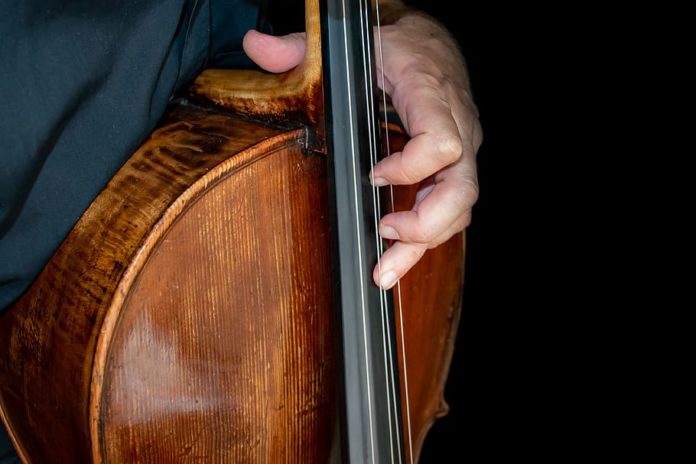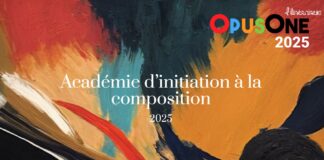For years, the prolific Portuguese label Creative Sources has released challenging sets of improvised music with a distinctly textural focus. The label, founded and run by violist Ernesto Rodrigues, is home to an aesthetic of nuanced improvisation open as much to pure sound as to empty space. Because its extensive catalogue includes work by some of the top free improvisers active in Europe and elsewhere, it’s only natural that it would encompass a broad spectrum of approaches to improvisation. Nevertheless many of the releases share a meticulous concern with striking and maintaining an architectural balance of forces no matter how many or few musicians are playing, or how unconventional the sounds. Three of the label’s recent releases are consistent with this well-developed aesthetic strategy.
 Nothing Here Is What It Seems [cs413] is the latest installment in the ongoing collaboration between the Spanish duo 23 Red Ants—cellist Macarena Montesinos and Niet F-n on laptop, pedals and objects – and Galician guitarist Pablo Orza. The three have played together since 2012; an early co-creation from that year is documented on the Pan y Rosas release .escap.ism, which shows an aggregate sound made up of discrete parts that retain their underlying identity. In contrast to this earlier work, on Nothing Here… the group tend to favor a more totalized sound in which the individual voices voluntarily fuse into a predominantly unpitched, composite whole. The guitar and cello in particular largely abandon their signature sounds, although on occasion the cello is recognizable in traces of natural harmonics and the pull of the bow; likewise, what we might call the guitarishness of the guitar will suddenly surge up in the twang of a plucked string. Although in some respects a more aggressive release than .escap.ism—the last track, notably, the appropriately titled Manipulados, is carved out of feedback and hard-edged electronics with harsh textures–on Nothing Here…some passages import a sly subtlety by being reduced to a handful of sounds broken up by silent interstices.
Nothing Here Is What It Seems [cs413] is the latest installment in the ongoing collaboration between the Spanish duo 23 Red Ants—cellist Macarena Montesinos and Niet F-n on laptop, pedals and objects – and Galician guitarist Pablo Orza. The three have played together since 2012; an early co-creation from that year is documented on the Pan y Rosas release .escap.ism, which shows an aggregate sound made up of discrete parts that retain their underlying identity. In contrast to this earlier work, on Nothing Here… the group tend to favor a more totalized sound in which the individual voices voluntarily fuse into a predominantly unpitched, composite whole. The guitar and cello in particular largely abandon their signature sounds, although on occasion the cello is recognizable in traces of natural harmonics and the pull of the bow; likewise, what we might call the guitarishness of the guitar will suddenly surge up in the twang of a plucked string. Although in some respects a more aggressive release than .escap.ism—the last track, notably, the appropriately titled Manipulados, is carved out of feedback and hard-edged electronics with harsh textures–on Nothing Here…some passages import a sly subtlety by being reduced to a handful of sounds broken up by silent interstices. A similar grounding of sound in silence characterizes Layering Time [cs435], an austerely beautiful piece for piano, field recording and viola by Eva-Maria Houben in collaboration with Rodrigues. Houben, who plays piano and provides a field recording of ravens, is a composer associated with the Wandelweiser group; the music, extending over a single long track, accordingly proceeds as a series of sparse piano tones and extended sounds from the viola distributed over vast, open spaces of ambient sound and bird calls. These open spaces are the audio image of time as a semi-transparent foundation of human activity; Houben’s and Rodrigues’s individual parts, which appear to have been recorded separately in early 2017, are layered onto this foundation in a way that preserves time as one of the work’s contributing, if nearly mute, voices.
A similar grounding of sound in silence characterizes Layering Time [cs435], an austerely beautiful piece for piano, field recording and viola by Eva-Maria Houben in collaboration with Rodrigues. Houben, who plays piano and provides a field recording of ravens, is a composer associated with the Wandelweiser group; the music, extending over a single long track, accordingly proceeds as a series of sparse piano tones and extended sounds from the viola distributed over vast, open spaces of ambient sound and bird calls. These open spaces are the audio image of time as a semi-transparent foundation of human activity; Houben’s and Rodrigues’s individual parts, which appear to have been recorded separately in early 2017, are layered onto this foundation in a way that preserves time as one of the work’s contributing, if nearly mute, voices. dé-col/age [cs397] is an intriguing update on and reimagining of the reed quintet. A very indirect heir of the classical clarinet quintet, which augmented the standard string quartet with a reed instrument, the ensemble integrates an alto saxophone, played by Nuno Torres, with a nonstandard string quartet of violin (Thea Farhadian), viola (Rodrigues), cello (Rodrigues’ son Guilherme), and double bass (Klaus Kürvers). The makeup of the string quartet isn’t the only nonstandard thing about the music, which is presented in eleven fairly concise sections. Like much contemporary free improvisation, it exploits nonstandard instrumental technique as well as contrapuntal and ensemble playing based as much on timbre as on pitch relationships. To be sure, the music does include some passages of linear, if freely dissonant, counterpoint. But it is just as likely to mass the five voices into a multiband drone of wide compass, with harmonies and dissonances emerging and dissipating as the strings and saxophone rise and fall singly and together, or to scatter them into episodic clusters of abstract, unpitched sounds. At its best, Affiche brings a satisfying balance of conventional and extended technique and a fine employment of the full timbral ranges of strings and reed.
dé-col/age [cs397] is an intriguing update on and reimagining of the reed quintet. A very indirect heir of the classical clarinet quintet, which augmented the standard string quartet with a reed instrument, the ensemble integrates an alto saxophone, played by Nuno Torres, with a nonstandard string quartet of violin (Thea Farhadian), viola (Rodrigues), cello (Rodrigues’ son Guilherme), and double bass (Klaus Kürvers). The makeup of the string quartet isn’t the only nonstandard thing about the music, which is presented in eleven fairly concise sections. Like much contemporary free improvisation, it exploits nonstandard instrumental technique as well as contrapuntal and ensemble playing based as much on timbre as on pitch relationships. To be sure, the music does include some passages of linear, if freely dissonant, counterpoint. But it is just as likely to mass the five voices into a multiband drone of wide compass, with harmonies and dissonances emerging and dissipating as the strings and saxophone rise and fall singly and together, or to scatter them into episodic clusters of abstract, unpitched sounds. At its best, Affiche brings a satisfying balance of conventional and extended technique and a fine employment of the full timbral ranges of strings and reed.






